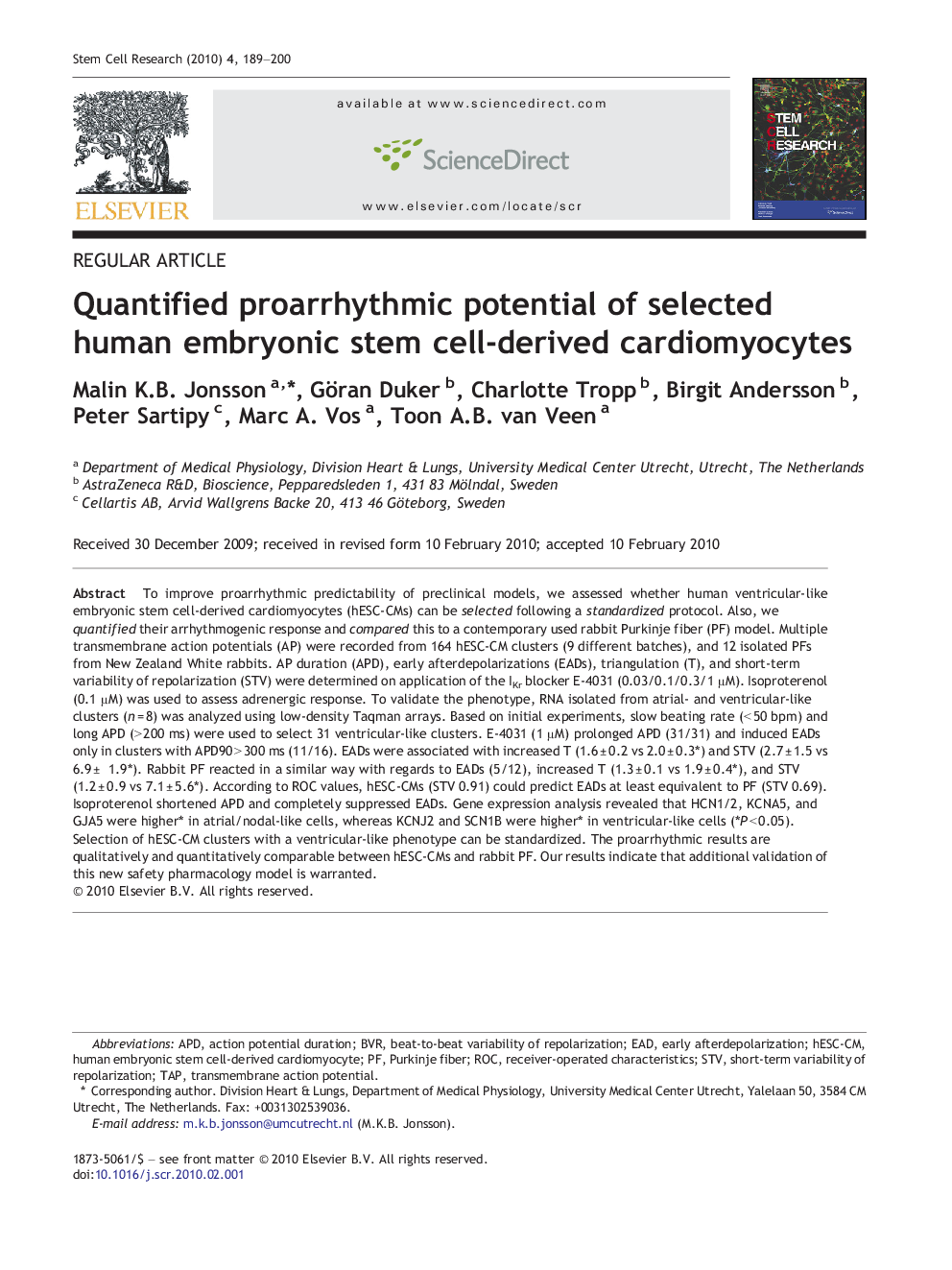| Article ID | Journal | Published Year | Pages | File Type |
|---|---|---|---|---|
| 10891378 | Stem Cell Research | 2010 | 12 Pages |
Abstract
To improve proarrhythmic predictability of preclinical models, we assessed whether human ventricular-like embryonic stem cell-derived cardiomyocytes (hESC-CMs) can be selected following a standardized protocol. Also, we quantified their arrhythmogenic response and compared this to a contemporary used rabbit Purkinje fiber (PF) model. Multiple transmembrane action potentials (AP) were recorded from 164 hESC-CM clusters (9 different batches), and 12 isolated PFs from New Zealand White rabbits. AP duration (APD), early afterdepolarizations (EADs), triangulation (T), and short-term variability of repolarization (STV) were determined on application of the IKr blocker E-4031 (0.03/0.1/0.3/1 μM). Isoproterenol (0.1 μM) was used to assess adrenergic response. To validate the phenotype, RNA isolated from atrial- and ventricular-like clusters (n = 8) was analyzed using low-density Taqman arrays. Based on initial experiments, slow beating rate (< 50 bpm) and long APD (> 200 ms) were used to select 31 ventricular-like clusters. E-4031 (1 μM) prolonged APD (31/31) and induced EADs only in clusters with APD90 > 300 ms (11/16). EADs were associated with increased T (1.6 ± 0.2 vs 2.0 ± 0.3â) and STV (2.7 ± 1.5 vs 6.9 ± 1.9â). Rabbit PF reacted in a similar way with regards to EADs (5/12), increased T (1.3 ± 0.1 vs 1.9 ± 0.4â), and STV (1.2 ± 0.9 vs 7.1 ± 5.6â). According to ROC values, hESC-CMs (STV 0.91) could predict EADs at least equivalent to PF (STV 0.69). Isoproterenol shortened APD and completely suppressed EADs. Gene expression analysis revealed that HCN1/2, KCNA5, and GJA5 were higherâ in atrial/nodal-like cells, whereas KCNJ2 and SCN1B were higherâ in ventricular-like cells (âP < 0.05). Selection of hESC-CM clusters with a ventricular-like phenotype can be standardized. The proarrhythmic results are qualitatively and quantitatively comparable between hESC-CMs and rabbit PF. Our results indicate that additional validation of this new safety pharmacology model is warranted.
Keywords
Related Topics
Life Sciences
Biochemistry, Genetics and Molecular Biology
Biotechnology
Authors
Malin K.B. Jonsson, Göran Duker, Charlotte Tropp, Birgit Andersson, Peter Sartipy, Marc A. Vos, Toon A.B. van Veen,
